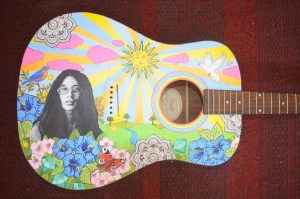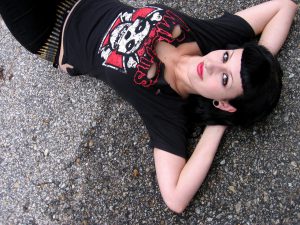Whether a specific genre, band or song created a subculture or just supported it while it was emerging is the chicken or the egg type of dilemma. Some subcultures were definitely a product of music; for others, music just tagged along with the movement. One thing is sure: music is definitely an inseparable part of every modern subculture, and people belonging to a particular subculture have always listened to the same type of music.
These subcultures often have one thing in common, and that is going against the mainstream. The mainstream is not applicable only to music but also to political movements, fashion, and more. Let’s take a look at some of the most influential subcultures created by music.
Hippies

Hippies are the first group of people that come to one’s mind when subcultures are mentioned. One could claim that they were a social experiment of a kind, but I just refuse to believe that. The hippie movement was an honest one that strongly opposed war and promoted love and tolerance.
On the other hand, hippies were the first known subculture to have openly taken various drugs, and the whole thing kind of crushed because of it. Or did it really come to an end?
Supported by the pop and rock giants at the time, such as Jimi Hendrix, The Beatles, Santana, and hundreds of other musicians, the hippie movement echoed through time, and we still feel its presence nowadays.
Punk

Punk-rockers were created by the style of music called punk, and the primary idea behind the movement was to oppose the oppressing governments. The solution, according to them, was to have no government and all and induce anarchy instead.
Punkers are often characterized by long and sharp hairstyles, old worn-out ripped jeans, tattoos, piercings, and other small details which are nowadays widely accepted but were controversial back in the day. The most popular bands were Sex Pistols and the Ramones.
Gangster

The gangster subculture is a broad term and mostly refers to the Afro-American working-class in the 80s and the 90s. They were a direct response to the genre of music called gangsta (or gangster) rap which itself was strictly opposed to the politics of the US towards the Afro-American people.
The music was frowned upon by the government at first, as it included promotion of reckless behavior, disorderly conduct, vandalism, theft, and more. However, gangsta rap had a higher purpose and was the voice of the underprivileged Afro-Americans who had to turn to gangs in order to get by.
Gangsters wore baggy trousers, tank tops, and various other accessories, such as necklaces, rings, bracelets — all huge and covered in gold.
Skinheads

Skinheads were some kind of a political movement that started as an expression of dissatisfaction with the conditions of the working class in England. Music that closely followed the skinheads was dub, ska, and reggae. They were called skinheads because they shaved their heads, which was just one of the features of their way of life.
However, things turned upside down when skinheads all over the world started associating themselves with a neo-nazi movement. All of a sudden, punk entered into the skinhead circles (Oi! Punk, to be precise) and the subculture was heavily marginalized due to their political views.
Metalheads
Metal is one of the most popular genres nowadays with millions of fans worldwide and dozens of sub-genres, each having a somewhat unique subculture. However, the most popular one emerged in the seventies and the eighties and was a response to the heavy metal music. Metalheads often wear spiky accessories, long hairs, and long beards. They often prefer dressing black and even have a signature hand sign, also known as “metal horns”. 🤘


